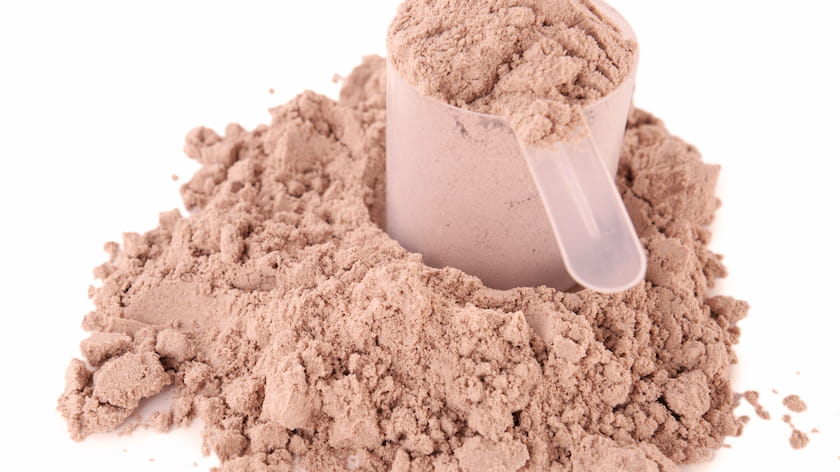Rep ranges are the gatekeepers to specific bodybuilding goals. Whether you want to increase endurance, definition, or lean muscle tissue, you need to be utilizing the proper rep ranges. Let’s review the benefits, considerations, and ranges of the classic rivals: low reps, moderate reps, and high reps.
Low Reps for Strength
Despite numerous articles and “bro-science” that says otherwise, performing low repetitions will efficiently activate both fast and slow twitch muscle fibers. The key is the volume, which needs to be heavy or 85% to 95% of your one-repetition maximum. The other factor is the number of repetitions, which will be between 1 and 5.
During a particular exercise, your body will first recruit the slow-twitch muscles fibers followed by fast-twitch once the volume or load becomes too much to handle. (Clark, Lucett, Sutton, 2012, p. 341.)
Low repetitions are generally associated with higher amounts of maximal strength as the volume you are moving is typically going to be heavier. During muscular hypertrophy, you increase the number and, more importantly, the size of filaments within the muscle tissue. This increase leads to the greatest strength gains.
Moderate Reps for Size
The moderate repetition range has been the subject of numerous studies, all of which confirm that it is the ideal number for consistent lean muscle mass. The number to strive for during moderate repetitions is 6 to 12.
While exercising in this range, your body will experience the benefits of the low repetition range as well as the benefits for an increased time under tension. Remember that low reps will allow for greater gains in strength.
Although you may not be lifting 95% of your one-repetition maximum, you are still going to be lifting heavy. The number to shoot for is 65% to 75% of your one-repetition maximum. (Clark, Lucett, Sutton, 2012, p. 341.)
These relatively heavy loads and increased time under tension will increase strength as well as sarcoplasmic hypertrophy. Put simply, this is the type of hypertrophy or muscle breakdown that forces your muscles to grow.
High Reps for Growth and Endurance
High repetitions are defined by performing any exercise with no less than 15 reps. High reps have the greatest influence on glycogen stores. When glycogen stores are vastly depleted through a workout that utilizes high repetitions, the size of your muscles benefits. Glycogen carries with it a great deal of water.
Ever get that pumped up, swollen feeling when you perform high repetitions? This water will help to promote protein synthesis. It will also enhance anabolic processes that produce the human growth hormone. Case in point: lean muscle growth. (Clark, Lucett, Sutton, 2012, p. 341.)
Most importantly, high repetitions allow blood to enter the muscle being trained and not leave. Blood carries nutrients, hormones, and repair agents.
Essentially, everything you need for growth is carried by blood! You’re breaking down the muscle tissue, and you are saturating that same tissue with nutrients, hormones, and the building blocks for muscle mass at the same time. (“Strong Science – Research On The Ideal Rep Range & Sets To Maximize Results,” 2010, para. 2)
What is the Best Rep Range Overall?
Research has shown that high repetition ranges are ideal for protein synthesis and muscle growth but not for the long term. A group of 15 young men was asked to perform the leg extension exercise under different repetition ranges. Researchers compared the active protein synthesis response between the following:
-
4 sets with 90% (1RM) – Performed to failure
-
4 sets with 30% (1RM) – Performed to failure
The results showed that the young men who performed four sets to failure with only 30% of their one repetition maximum had greater rates of protein synthesis. (“Low-Load High Volume Resistance Exercise Stimulates Muscle Protein Synthesis More Than High-Load Low Volume Resistance Exercise in Young Men” August 09, 2010. Para. 1)
As briefly mentioned above, while higher repetitions are ideal for muscle growth, it is for the short term. This is due to the lack of increasing resistance. This is where low and moderate repetition ranges come into play.
By training with proper work volumes in the low and moderate repetition ranges, you will find that your overall strength will increase as you are building lean muscle mass.
Case in point: there is a time and place for everything. You should introduce all three types of repetition ranges into your workout program to receive maximum benefit.
Repetitions in Your Own Program
With that said, here is an example of how to incorporate every type of repetition range, assuming you are training each muscle group once per week:
-
Exercises 1 and 2 in your program
- Complete 3 to 4 sets with heavy loads
- 1 to 5 repetitions
- Use compound movements
-
Exercises 3 and 4
- 3 to 4 sets with moderate loads
- 8 to 12 repetitions
- Use compound movements
-
Exercises 5 and 6
- 3 to 4 sets with light loads
- 15 to 30 repetitions
- Isolation-based exercises
The following is a program for those individuals who are training twice in one day or training one muscle group twice per week:
Session One
-
Exercises 1 and 2
- 3 to 4 sets with heavy loads
- 2 to 4 repetition range
- Use compound movements
-
Exercises 3 and 4
- 3 to 4 sets with moderate loads
- 4 to 6 repetitions
- Use compound movements
-
Exercises 5 and 6
- 3 to 4 sets with light loads
- 6 to 8 repetitions
- Isolation-based exercises
Session Two
-
Exercises 1 and 2
- 3 to 4 sets with heavy loads
- 12 to 15 repetition range
- Use compound movements
-
Exercises 3 and 4
- 3 to 4 sets with moderate loads
- 15 to 20 repetitions
- Use compound movements
-
Exercises 5 and 6
- 3 to 4 sets with light loads
- 25 to 30 repetitions
- Isolation-based exercises
1.) Burd, Nicholas. (2010) “Low-Load High Volume Resistance Exercise Stimulates Muscle Protein Synthesis More Than High-Load Low Volume Resistance Exercise in Young Men” plosone.org.
2.) Clark, M.A., Lucett, S.C., Sutton, B.G. (2012). NASM Essentials of Personal Fitness Training. Baltimore, MD: Lippincott Williams & Wilkins.
3.) Stoppani, Jim. (2010). Strong Science – Research On The Ideal Rep Range & Sets To Maximize Results. simplyshredded.com.




Leave a comment
All comments are moderated before being published.
This site is protected by hCaptcha and the hCaptcha Privacy Policy and Terms of Service apply.